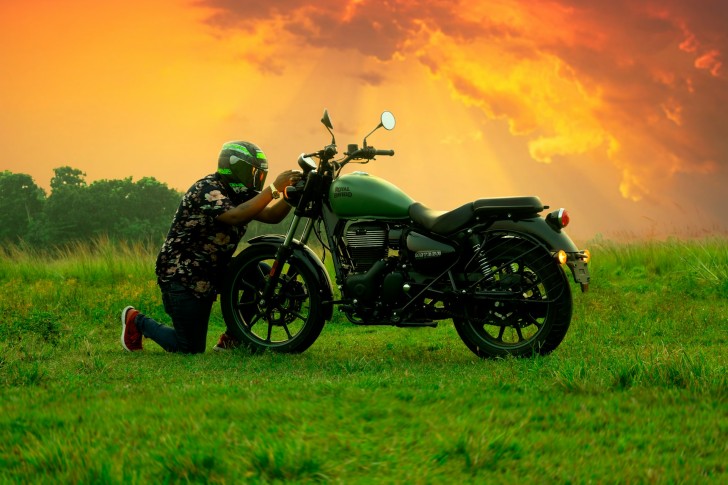It’s easy to focus on the purchase price and forget about the long list of other expenses that come with motorcycle ownership. That’s why using a motorcycle finance calculator Australia is one of the smartest things you can do before making a purchase. It helps you see not only what you can afford upfront, but what the long-term financial picture looks like once everything else is factored in.
The True Cost of Motorcycle Ownership
The sticker price is just the beginning. While bikes are often cheaper to buy and run than cars, the hidden costs can still surprise you — especially if you’re not prepared for them. These can include insurance, registration, safety gear, maintenance, and even storage.
The trick to staying ahead is to think beyond the initial cost and budget for the life of your bike. A few hundred dollars here and there might not sound like much, but over a year or two, it adds up fast.
Insurance and Registration Fees
Insurance is a must — not just for legal reasons but for peace of mind. Costs can vary widely depending on the bike’s make, model, age, and your experience level as a rider. Sports bikes, for example, often come with higher premiums due to their higher risk profile.
Then there’s registration, which includes compulsory third-party (CTP) insurance in most places. While it’s not the biggest expense, it’s one that repeats annually, so it’s worth including in your ongoing budget.
It’s a good idea to shop around and compare insurance quotes before you commit to a bike. What seems like a small monthly difference can save you hundreds each year.
The Gear You Actually Need
New riders often underestimate the cost of proper riding gear — or worse, skip it altogether. But investing in good-quality protective gear isn’t optional; it’s essential.
At the very least, you’ll need:
- A certified helmet
- Gloves
- Jacket with armour
- Riding pants or reinforced jeans
- Boots designed for motorcycling
Good gear isn’t cheap, but it can literally save your life. Buying quality items upfront also means they’ll last longer, making them a smarter investment over time.
Maintenance, Servicing, and Repairs
Like any vehicle, bikes need regular maintenance to stay safe and reliable. Tyres, brake pads, oil, and filters all wear out faster than you might expect — especially if you ride frequently.
It’s also easy to forget about scheduled servicing. Most motorcycles require servicing every 5,000 to 10,000 kilometres, depending on the make and model. Labour costs can add up, particularly if you own a high-performance or imported bike.
DIY maintenance can save you money, but it’s important to know your limits. For complex repairs or diagnostics, a trusted mechanic is worth the investment.
Fuel Efficiency Isn’t Always What It Seems
Motorcycles are generally more fuel-efficient than cars, but not all bikes are created equal. Larger engines and high-performance models can burn through fuel surprisingly quickly.
Before committing, check the average fuel consumption of the model you’re considering and factor that into your budget. Even a small difference in efficiency can make a noticeable impact if you commute long distances.
Accessories and Upgrades
Here’s where many budgets go off the rails. Once you’ve got the bike, it’s tempting to start adding extras — phone mounts, luggage racks, exhaust systems, or performance upgrades. While these can improve your riding experience, they’re also an easy way to overspend.
Set limits early. Decide which accessories are truly functional versus which are purely aesthetic. Prioritise safety and comfort before looks or sound.
Depreciation: The Silent Cost
Depreciation often flies under the radar, but it’s one of the biggest financial factors in vehicle ownership. Like cars, motorcycles lose value over time — often more quickly than new owners expect.
While some premium brands hold their value better, most bikes will lose a significant portion of their worth within the first few years. If you plan to sell or trade in later, keep this in mind when budgeting.
How to Avoid the Financial Pitfalls
The best way to keep your dream bike from becoming a financial headache is to plan ahead. Before signing any finance agreement, map out all your potential costs for the first year — not just the repayments.
Consider:
- Insurance and registration renewals
- Gear and safety equipment
- Regular servicing and parts
- Fuel and parking
- Unexpected repairs or replacements
By seeing the full financial picture early on, you can make a confident, informed decision that won’t come back to bite you later.
Owning a motorcycle should feel like freedom — not a burden. With the right preparation and realistic budgeting, you can enjoy every kilometre on the road without worrying about what’s waiting in your bank account.
 Editorial staff
Editorial staff

 Editorial staff
Editorial staff


